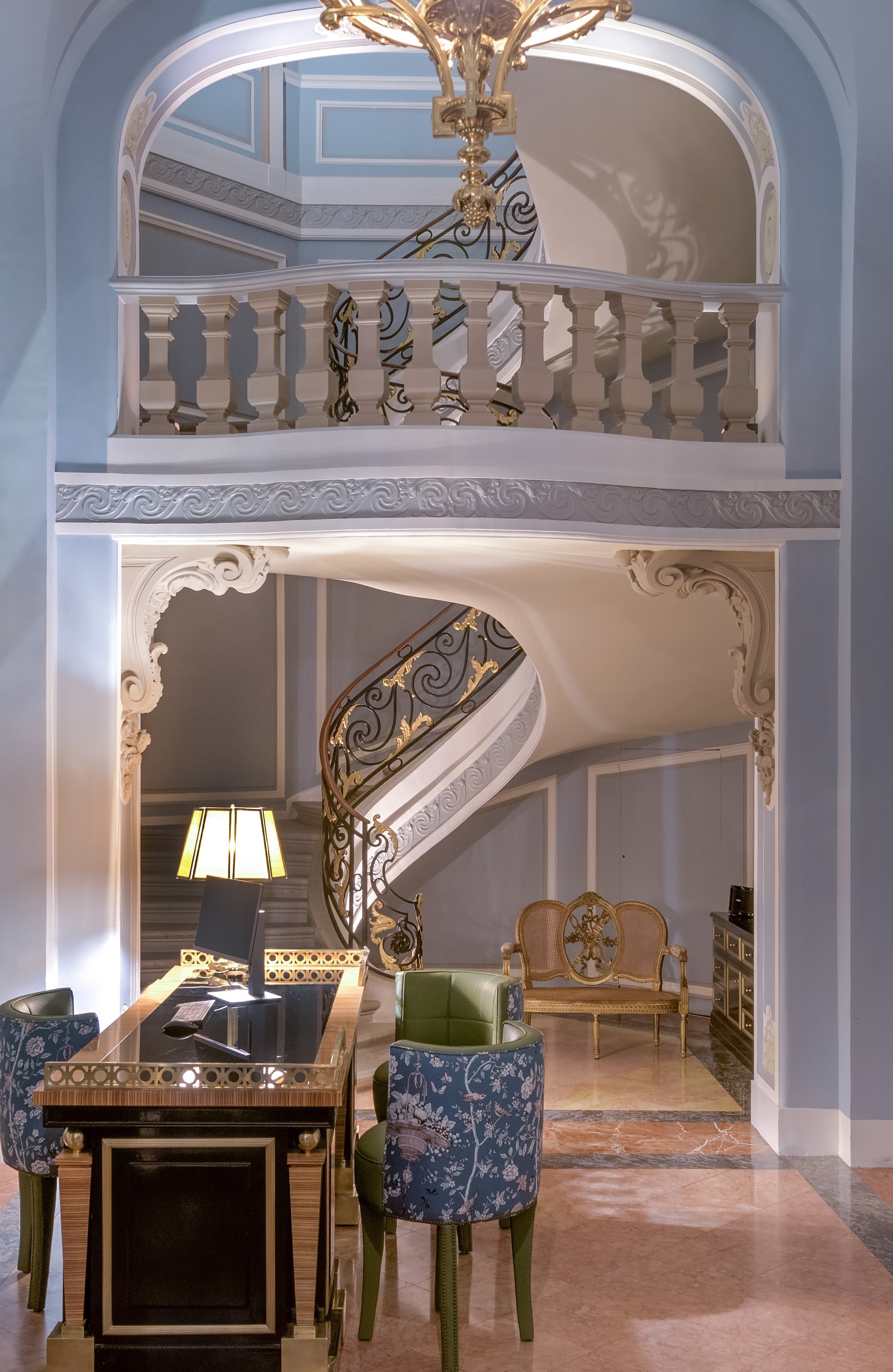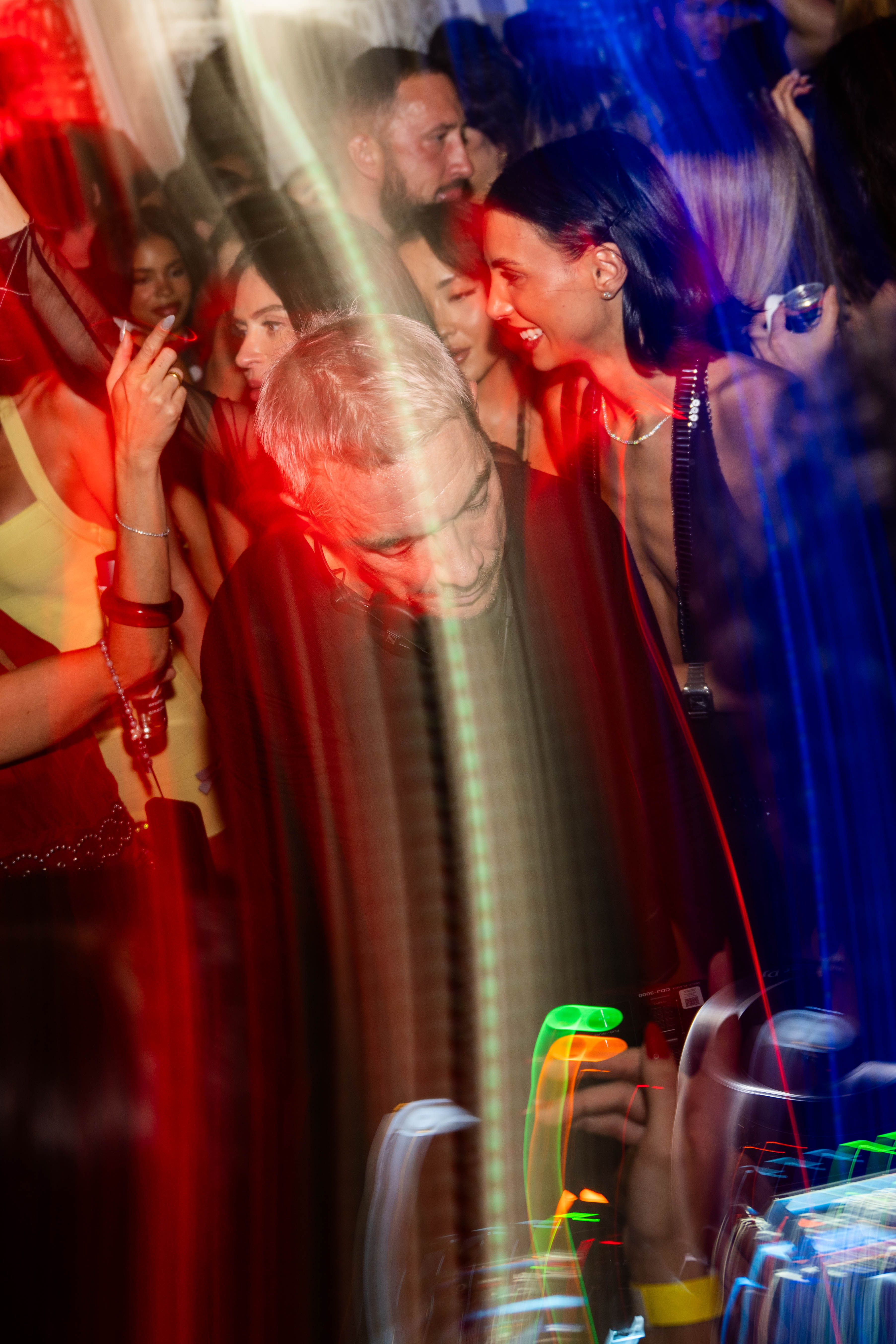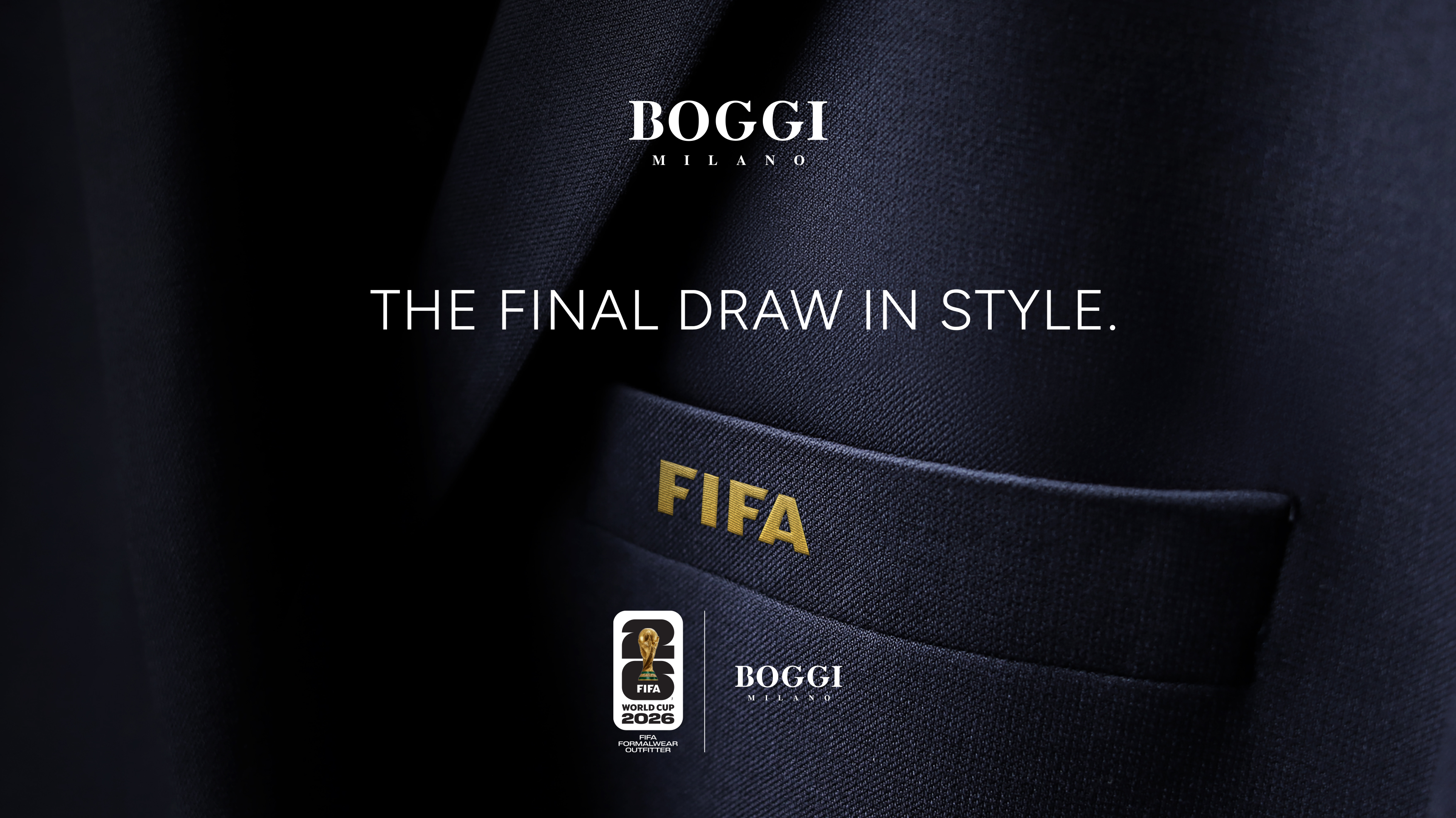Oslo-based artist [Bendik Giske](http://www.bendikgiske.com) uses his saxophone to express vulnerability and induce a sense of euphoria in his debut album “Surrender,” released on Jan. 25. Giske transcribes his indelible nights out clubbing in Berlin through his mesmerizing yet simplistic style- divulging the meaning of the word “surrender” in the album’s recurring and rapturous sequences.
The work of art triumphs in completing a relatable story for listeners who have ever found themselves in a moment of chaos- whether it be in a crowded club or on an impromptu adventure. Giske touches on how his debut album intends to meet the listener at a hypnotic headspace as it unfolds into a jubilant escape.


* * *
**How did you come about translating your use of the woodwind instrument into such an electronic composition?**
It is really all about integrity for me. In order to find happiness in all aspects of my life, I felt I needed to create a connection between what excites me in my social life, and my profession. I have taken an interest in electronic music production for as long as the tools have been available to me, an interest that for many years existed parallel with my practice as a performing instrumentalist. Growing up in oscillation between Ubud in Bali and Oslo I have always been carrying a mixed set of references in me, so rather than thinking of it as translation, it´s more like adaptation. When I came back to Oslo after a leg of time in Ubud, all the kids and adults would ask me about my experiences; rather than putting words to them, I re-told them through dance and music. I played didgeridoo and danced the Baris for the kids in Oslo, and in Bali I sang Norwegian lullabies, played the piano and eventually brought a Norwegian jaw harp around. I guess I´m still doing the same thing, telling my stories through music and movement with the tools that are available to me.
**Was there a lot of post-productions in the way you were able to make the sounds percussive?**
I came into this production with a set of rules, dogmas, in order to get to the core of what this project was. I decided that no sound should be added at any point in the production. It was only going to be me and my tenor saxophone in reverberant spaces. Enter album producer [Amund Ulvestad](https://www.amundulvestad.no) who embraced these dogmas and we developed the close-mic´ing of the instrument that can be heard on the album. Tiny directional microphones are mounted on the body of the instrument, in direction of selected keys, to really capture their humble and percussive qualities. What we found in the process of mixing the album, was that there were very few references for the sound we wanted to create, and we had to sculpt it ourselves. In other words: yes, there was a lot of post-production, but it was really time spent to develop and explore possibilities. In the end it came down to well-placed microphones, compression and EQ.
**What was your background in the instrument and what inspired your songs compositions?**
I started in the school marching band at the age of 12 following my family´s last stay in Bali. I was taken in by [Kristoffer Alberts](http://www.kristofferalberts.no) who eventually became my best friend and fellow saxophonist. We were constantly pushing each other. Dance has always been a vital part of my daily life, and to me music and dance are inseparable, one and the same. They´re energies put into the world by our bodies, and cannot really be distinguished from one another. When I really started to experience music through dance in the Berlin clubs, I realized that I had to approach my instrument in the same way: from a physical perspective. The compositions are more like momentums that I am able to create, and through the act of surrender I can let intuition and body movement finish the job. Rather than finishing compositions before I perform them, I come up with a set of parameters, a system, and rely on them to take me to something resembling a finished piece. Although I don’t consider my music to be improvisation, I always access that intuition. Performing the music is in itself an act of surrender for me, one that I invite the audience to take part in.
**The titles of your tracks have a wonderful narrative to them, was this on purpose to set up the story of the album?**
Yes indeed. The titles were the last thing to fall into place, but the identities of the tracks were always clear to me. The tracks all exist in the same context for me, they have always been part of the same narrative. I am telling the story of my experience with abandoning elements in the performance of masculinity and self-assertion, and in their place embracing whatever might come as blessings.
**You have worked with various electronic luminaries is it important that you music does translate to both electronic and analog?**
I see this release as my contribution to a conversation. A conversation that happens in the realm of electronic music, clubbing, dancing and personal explorations. In that sense I really see my music as electronic music, even though it isn´t electronic at all. The importance, for me, lies in the effort to combine all the aspects that are me, the skills I have acquired, and make them work together and elevate each other. Circumstance and opportunity has lead me to where I´ve found myself: enjoying club and drag culture, embracing the importance of taking a queer perspective, and playing saxophone.
* * *
Photo courtesy of Daniele Fummo and Benjamin Whitley
 
* * *
**How did you come about translating your use of the woodwind instrument into such an electronic composition?**
It is really all about integrity for me. In order to find happiness in all aspects of my life, I felt I needed to create a connection between what excites me in my social life, and my profession. I have taken an interest in electronic music production for as long as the tools have been available to me, an interest that for many years existed parallel with my practice as a performing instrumentalist. Growing up in oscillation between Ubud in Bali and Oslo I have always been carrying a mixed set of references in me, so rather than thinking of it as translation, it´s more like adaptation. When I came back to Oslo after a leg of time in Ubud, all the kids and adults would ask me about my experiences; rather than putting words to them, I re-told them through dance and music. I played didgeridoo and danced the Baris for the kids in Oslo, and in Bali I sang Norwegian lullabies, played the piano and eventually brought a Norwegian jaw harp around. I guess I´m still doing the same thing, telling my stories through music and movement with the tools that are available to me.
**Was there a lot of post-productions in the way you were able to make the sounds percussive?**
I came into this production with a set of rules, dogmas, in order to get to the core of what this project was. I decided that no sound should be added at any point in the production. It was only going to be me and my tenor saxophone in reverberant spaces. Enter album producer [Amund Ulvestad](https://www.amundulvestad.no) who embraced these dogmas and we developed the close-mic´ing of the instrument that can be heard on the album. Tiny directional microphones are mounted on the body of the instrument, in direction of selected keys, to really capture their humble and percussive qualities. What we found in the process of mixing the album, was that there were very few references for the sound we wanted to create, and we had to sculpt it ourselves. In other words: yes, there was a lot of post-production, but it was really time spent to develop and explore possibilities. In the end it came down to well-placed microphones, compression and EQ.
**What was your background in the instrument and what inspired your songs compositions?**
I started in the school marching band at the age of 12 following my family´s last stay in Bali. I was taken in by [Kristoffer Alberts](http://www.kristofferalberts.no) who eventually became my best friend and fellow saxophonist. We were constantly pushing each other. Dance has always been a vital part of my daily life, and to me music and dance are inseparable, one and the same. They´re energies put into the world by our bodies, and cannot really be distinguished from one another. When I really started to experience music through dance in the Berlin clubs, I realized that I had to approach my instrument in the same way: from a physical perspective. The compositions are more like momentums that I am able to create, and through the act of surrender I can let intuition and body movement finish the job. Rather than finishing compositions before I perform them, I come up with a set of parameters, a system, and rely on them to take me to something resembling a finished piece. Although I don’t consider my music to be improvisation, I always access that intuition. Performing the music is in itself an act of surrender for me, one that I invite the audience to take part in.
**The titles of your tracks have a wonderful narrative to them, was this on purpose to set up the story of the album?**
Yes indeed. The titles were the last thing to fall into place, but the identities of the tracks were always clear to me. The tracks all exist in the same context for me, they have always been part of the same narrative. I am telling the story of my experience with abandoning elements in the performance of masculinity and self-assertion, and in their place embracing whatever might come as blessings.
**You have worked with various electronic luminaries is it important that you music does translate to both electronic and analog?**
I see this release as my contribution to a conversation. A conversation that happens in the realm of electronic music, clubbing, dancing and personal explorations. In that sense I really see my music as electronic music, even though it isn´t electronic at all. The importance, for me, lies in the effort to combine all the aspects that are me, the skills I have acquired, and make them work together and elevate each other. Circumstance and opportunity has lead me to where I´ve found myself: enjoying club and drag culture, embracing the importance of taking a queer perspective, and playing saxophone.
* * *
Photo courtesy of Daniele Fummo and Benjamin Whitley

* * *
**How did you come about translating your use of the woodwind instrument into such an electronic composition?**
It is really all about integrity for me. In order to find happiness in all aspects of my life, I felt I needed to create a connection between what excites me in my social life, and my profession. I have taken an interest in electronic music production for as long as the tools have been available to me, an interest that for many years existed parallel with my practice as a performing instrumentalist. Growing up in oscillation between Ubud in Bali and Oslo I have always been carrying a mixed set of references in me, so rather than thinking of it as translation, it´s more like adaptation. When I came back to Oslo after a leg of time in Ubud, all the kids and adults would ask me about my experiences; rather than putting words to them, I re-told them through dance and music. I played didgeridoo and danced the Baris for the kids in Oslo, and in Bali I sang Norwegian lullabies, played the piano and eventually brought a Norwegian jaw harp around. I guess I´m still doing the same thing, telling my stories through music and movement with the tools that are available to me.
**Was there a lot of post-productions in the way you were able to make the sounds percussive?**
I came into this production with a set of rules, dogmas, in order to get to the core of what this project was. I decided that no sound should be added at any point in the production. It was only going to be me and my tenor saxophone in reverberant spaces. Enter album producer [Amund Ulvestad](https://www.amundulvestad.no) who embraced these dogmas and we developed the close-mic´ing of the instrument that can be heard on the album. Tiny directional microphones are mounted on the body of the instrument, in direction of selected keys, to really capture their humble and percussive qualities. What we found in the process of mixing the album, was that there were very few references for the sound we wanted to create, and we had to sculpt it ourselves. In other words: yes, there was a lot of post-production, but it was really time spent to develop and explore possibilities. In the end it came down to well-placed microphones, compression and EQ.
**What was your background in the instrument and what inspired your songs compositions?**
I started in the school marching band at the age of 12 following my family´s last stay in Bali. I was taken in by [Kristoffer Alberts](http://www.kristofferalberts.no) who eventually became my best friend and fellow saxophonist. We were constantly pushing each other. Dance has always been a vital part of my daily life, and to me music and dance are inseparable, one and the same. They´re energies put into the world by our bodies, and cannot really be distinguished from one another. When I really started to experience music through dance in the Berlin clubs, I realized that I had to approach my instrument in the same way: from a physical perspective. The compositions are more like momentums that I am able to create, and through the act of surrender I can let intuition and body movement finish the job. Rather than finishing compositions before I perform them, I come up with a set of parameters, a system, and rely on them to take me to something resembling a finished piece. Although I don’t consider my music to be improvisation, I always access that intuition. Performing the music is in itself an act of surrender for me, one that I invite the audience to take part in.
**The titles of your tracks have a wonderful narrative to them, was this on purpose to set up the story of the album?**
Yes indeed. The titles were the last thing to fall into place, but the identities of the tracks were always clear to me. The tracks all exist in the same context for me, they have always been part of the same narrative. I am telling the story of my experience with abandoning elements in the performance of masculinity and self-assertion, and in their place embracing whatever might come as blessings.
**You have worked with various electronic luminaries is it important that you music does translate to both electronic and analog?**
I see this release as my contribution to a conversation. A conversation that happens in the realm of electronic music, clubbing, dancing and personal explorations. In that sense I really see my music as electronic music, even though it isn´t electronic at all. The importance, for me, lies in the effort to combine all the aspects that are me, the skills I have acquired, and make them work together and elevate each other. Circumstance and opportunity has lead me to where I´ve found myself: enjoying club and drag culture, embracing the importance of taking a queer perspective, and playing saxophone.
* * *
Photo courtesy of Daniele Fummo and Benjamin Whitley


















